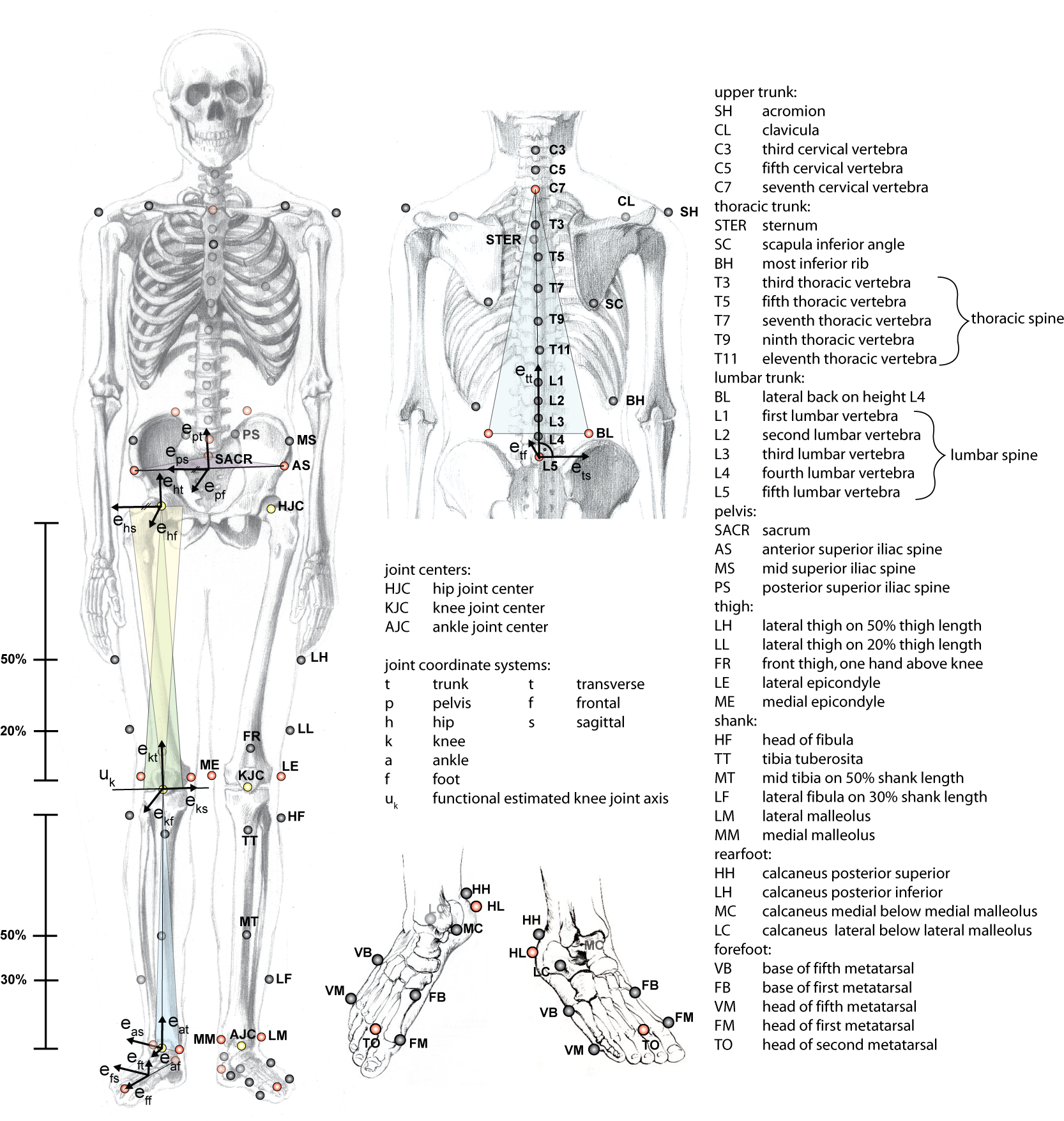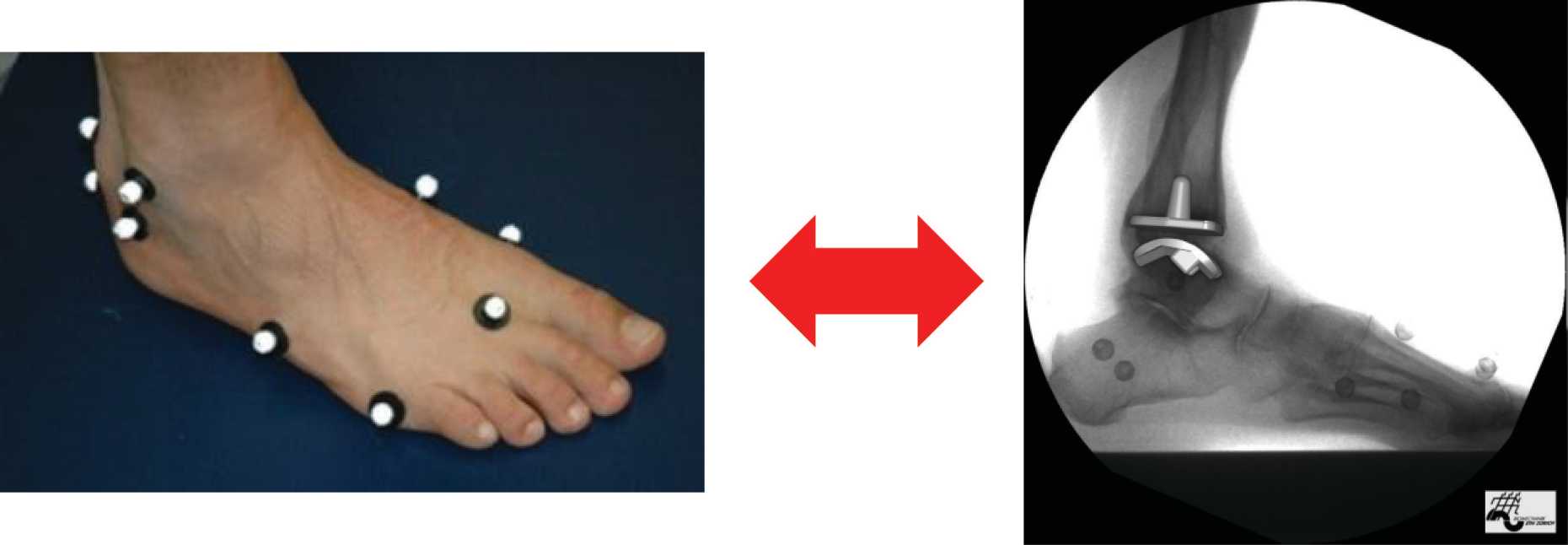Development, Improvement, Accuracy and Repeatability Assessment of Skin Marker Analysis
Description
Motion analysis based on skin markers is widely used in clinical as well as sports research. It is an extremely powerful tool since it allows the assessment of whole body motion, in vivo, dynamically and non-invasively. However, for its appropriate usage it is crucial to be aware of its possibilities and limitations in examining a biological system.
The goal is to develop, expand and improve the marker set as well as the analysis procedure and adapt it according to the underlying research question. This includes the composition of marker models, the usage of physical and theoretical methods aiming in decreasing errors due to skin movement artefacts, as e.g. redundant marker clouds, the estimation of joint centers, the definition of anatomical coordinate systems and the implementation of the appropriate convention to describe joint motion.
Skin movement artefacts are regarded as the largest limitation in skin marker analysis. By synchronous videofluoroscopic and skin marker assessment skin movement artefacts and their effect on joint motion can be quantified. The limitation in accuracy is assessed by comparing skin marker data to the gold standard videofluoroscopy.
Knowledge of the repeatability of the skin marker assessment is crucial, especially when applied to follow a certain progress over time, as e.g. during rehabilitation or training. For motion analysis of human beings, repeatability is influenced on the one hand by the repeatability of the experimental set up and secondly by the repeatability of the assessed motion task. The goal is to study the repeatability of different motion tasks. The repeatability of the experimental set up is addressed in a theoretical approach based on experimental assessed anatomical landmark misplacement data.
Contact
Institut für Biomechanik
Gloriastrasse 37/ 39
8092
Zürich
Switzerland
Project Relevant Abstracts and Publications:
1. Zemp, R., et al., Soft tissue artefacts of the human back: comparison of the sagittal curvature of the spine measured using skin markers and an open upright MRI. PLoS One, 2014. 9(4): p. e95426.
2. Zemp, R., et al. Comparison of the sagittal curvature of the spine measured by skin markers and an open MRI. in 12th International Symposium on 3D Analysis of Human Movement. 2012. Bologna, Italy.
3. List, R., et al., Kinematics of the Trunk and the Lower Extremities during Restricted and Unrestricted Squats. J Strength Cond Res, 2012.
4. List, R., et al. How well can skin marker analysis detect the kinematics of a total ankle arthroplasty? - A comparison to videofluoroscopy. in Journal of Foot and Ankle Research. 2012.
5. Krauss, I., et al., Comparison of distinctive gait variables using two different biomechanical models for ankle joint kinematics. Footwear Science, 2010. 2(2): p. 77 - 84.
6. Wolf, P., et al., Day-to-Day consistency of lower extremity kinematics during walking and running. J Appl Biomech, 2009. 25(4): p. 369-76.
7. Krauß, I., et al. Vergleich zweier biomechanischer Modelle zur Quantifizierung kinematischer Messgrößen am Beispiel des Sprunggelenks. in Tagung der BVS Sektion Biomechanik 2009. 2009. Tübingen.
8. Krauß, I., et al. Vergleich zweier biomechanischer Modelle zur Quantifzierung kinematischer Messgrößen am Beispiel des Kniegelenks. in Deutscher Kongress for Orthopädie und Unfallchirurgie. 2009. Berlin.
9. List, R., et al., Erfassen der Vor- und Rückfussbewegungen im Gehen und Laufen. Sportmedizin und Sporttraumatologie, 2008. 56(2): p. 43-49.
10. List, R., et al. Two-segment foot kinematics during running. in Journal of biomechanics. 2006. Elsevier Science.
11. List, R., A Hybrid Marker Set for future basic research and instrumented gait analysis at the Laboratory for Biomechanics, in D-BIOL. 2005, ETH Zurich: Zurich.


